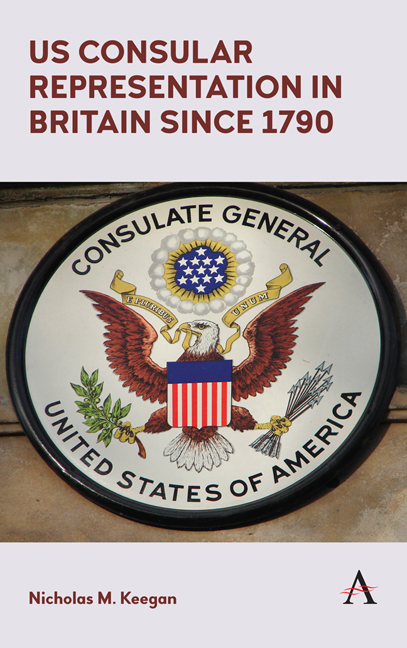Book contents
- Frontmatter
- Dedication
- Contents
- List of Illustrations
- Foreword
- Preface
- Acknowledgements
- Introduction
- PART 1
- PART 2
- PART 3
- Chapter Six Consular Posts and Consular Agencies in Major Cities
- Chapter Seven Belfast
- Chapter Eight Birmingham
- Chapter Nine Bradford
- Chapter Ten Bristol
- Chapter Eleven Cardiff
- Chapter Twelve Dublin
- Chapter Thirteen Dundee
- Chapter Fourteen Dunfermline
- Chapter Fifteen Edinburgh and Leith
- Chapter Sixteen Falmouth
- Chapter Seventeen Liverpool
- Chapter Eighteen London
- Chapter Nineteen Newcastle upon Tyne
- Chapter Twenty Southampton
- Chapter Twenty-One Stoke on Trent
- Chapter Twenty-Two An Evolving, Adaptive Service
- Appendix: Locations and Categories of Consular Offices
- Notes
- Sources
- Bibliography
- Index
Chapter Sixteen - Falmouth
from PART 3
Published online by Cambridge University Press: 21 June 2018
- Frontmatter
- Dedication
- Contents
- List of Illustrations
- Foreword
- Preface
- Acknowledgements
- Introduction
- PART 1
- PART 2
- PART 3
- Chapter Six Consular Posts and Consular Agencies in Major Cities
- Chapter Seven Belfast
- Chapter Eight Birmingham
- Chapter Nine Bradford
- Chapter Ten Bristol
- Chapter Eleven Cardiff
- Chapter Twelve Dublin
- Chapter Thirteen Dundee
- Chapter Fourteen Dunfermline
- Chapter Fifteen Edinburgh and Leith
- Chapter Sixteen Falmouth
- Chapter Seventeen Liverpool
- Chapter Eighteen London
- Chapter Nineteen Newcastle upon Tyne
- Chapter Twenty Southampton
- Chapter Twenty-One Stoke on Trent
- Chapter Twenty-Two An Evolving, Adaptive Service
- Appendix: Locations and Categories of Consular Offices
- Notes
- Sources
- Bibliography
- Index
Summary
Falmouth is a small maritime town in Cornwall, in the south-west of England. The story of the American consular presence there is unusual in two respects: with only one exception, during a presence of more than a hundred years not only were all the consuls members of the same Quaker family but they were also British nationals. Additionally, the same family, by the name of Fox, provided American consular representation in nearby Plymouth for almost seventy-five years. Indeed, the family had a remarkable record of being consuls for a number of countries well into the end of the twentieth century. For example, between 1859 and 1965 they represented 36 different countries at Falmouth, Plymouth, Southampton and Totland Bay.
Edward Long Fox was nominated as the port's first American consul by George Washington on 19 February 1793 and the appointment was confirmed by the Senate the following day. He had trained at Edinburgh University and was a busy physician, and very active in the new field of establishing ‘lunatic asylums’. However it is doubtful if he actually took up the appointment because just over a year later Washington rescinded it, saying: ‘It now appears that the name of the person intended to be nominated is Robert Weare Fox. I therefore nominate [him].’ The appointment was approved the following day. Robert Weare Fox, the elder, was a mine owner, merchant and shipping agent in Cornwall and principal partner in the family firm of G. C. Fox & Co. The consulate was operated from the company premises at Arwenack Street, Falmouth. He served until his death in 1818, apart from a break of two years due to the war between the United States and Britain from 1812 to 1814. When the war was declared he ‘took down the American coat of arms, stored away the American flag, and waited for the war to run its course. At its conclusion, up went the coat of arms and the American flag, and Mr Fox resumed his duties.’5 He was succeeded by his son Robert Were Fox (the spelling of their middle names was different), a distinguished geologist and physicist who was also a supporter of religious emancipation and the abolition of slavery.
- Type
- Chapter
- Information
- US Consular Representation in Britain since 1790 , pp. 165 - 168Publisher: Anthem PressPrint publication year: 2018



